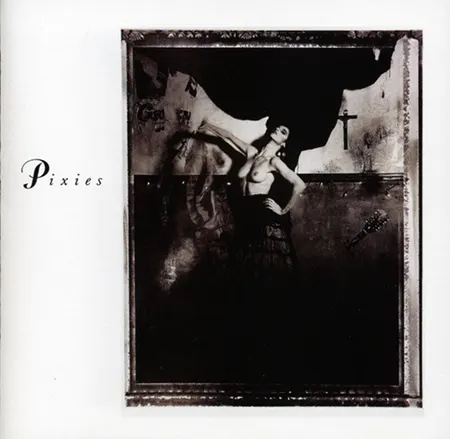Pixies: The Pioneers of Alternative Rock’s Loud-Quiet-Loud Dynamics
Pixies. Introduction
Emerging from the vibrant music scene of Boston in the mid-1980s, Pixies are widely regarded as one of the most influential alternative rock bands of all time. With their innovative use of dynamics, blending abrasive noise with melodic hooks, and cryptic yet compelling lyrics, Pixies laid the foundation for a generation of bands that would go on to define the 1990s rock landscape. Their distinct “loud-quiet-loud” song structure became a blueprint for many alternative and grunge bands, including Nirvana and Radiohead.
Pixies. Formation and Early Years
Pixies formed in 1986 when Black Francis (born Charles Thompson IV), a singer and guitarist, moved to Boston and joined forces with bassist Kim Deal, drummer David Lovering, and guitarist Joey Santiago. The band’s name was reportedly inspired by a nickname that Francis’s friend gave him.
From the beginning, Pixies sought to blend punk rock energy with melodic sensibilities and surrealist imagery. Their early EPs and singles gained attention in the underground scene, but it was their debut album, Come On Pilgrim (1987), that set the stage for their unique sound and cult following.
Pixies. Breakthrough with “Surfer Rosa” (1988)
Pixies’ first full-length album, Surfer Rosa, released in 1988, is often hailed as a masterpiece. Produced by Steve Albini, the album featured raw production and jagged guitars that captured the band’s intense energy. Tracks like “Where Is My Mind?” and “Bone Machine” showcased the band’s ability to fuse bizarre lyrical themes — touching on surrealism, violence, and dark humor — with catchy, memorable melodies.
Despite its critical acclaim, Surfer Rosa had modest commercial success, but it firmly established Pixies as a force in the indie and alternative rock scenes.
“Doolittle” (1989): Critical and Commercial Success
The band’s follow-up album, Doolittle, released in 1989, elevated Pixies to new heights. Produced by Gil Norton, Doolittle polished the band’s sound without losing their raw edge. This album contains some of their best-known songs, including “Debaser,” “Here Comes Your Man,” “Monkey Gone to Heaven,” and “Wave of Mutilation.”
Doolittle was a critical and commercial breakthrough, reaching the Billboard 200 and influencing countless artists. The album’s mixture of surreal lyrics, political and ecological themes, and the dynamic interplay between Black Francis’s raw vocals and Kim Deal’s harmonies defined alternative rock’s aesthetic for years to come.
Influence on the 1990s Alternative Scene
Pixies’ sound was a direct influence on Nirvana, particularly Kurt Cobain, who famously cited Surfer Rosa and Doolittle as major inspirations. The band’s loud-quiet-loud dynamics were emulated widely, helping to shape the grunge explosion of the early ’90s.
Bands like Radiohead, Weezer, and Smashing Pumpkins also drew from Pixies’ pioneering blend of melody and noise, and their cryptic lyricism and unique vocal style became a hallmark of alternative rock songwriting.
Hiatus and Reunion
After releasing Bossanova (1990) and Trompe le Monde (1991), Pixies disbanded in 1993 amid internal tensions and creative differences. Kim Deal’s departure in particular was a significant factor, as she had become an important voice and songwriter in the band.
The band reunited in 2004 without Deal, who was replaced by bassist Kim Shattuck briefly, then Kimberly “Kim” Shattuck, and finally by Paz Lenchantin in 2014. Since their reunion, Pixies have toured extensively, playing both their classic albums and new material.
Pixies. Later Albums and Legacy
Pixies released Indie Cindy (2014), Head Carrier (2016), and Beneath the Eyrie (2019), showcasing their continued ability to evolve while retaining their signature sound. Though the later albums received mixed reviews compared to their groundbreaking earlier work, Pixies remain a vital live act and continue to inspire new generations of musicians.
Pixies. Unique Musical Style and Themes
Pixies’ music is characterized by stark contrasts: soft verses explode into loud, aggressive choruses; eerie, sometimes nonsensical lyrics often touch on themes ranging from mythology and religion to personal angst and social commentary. Black Francis’s distinctive yowl, Joey Santiago’s inventive guitar riffs, and Kim Deal’s melodic bass and backing vocals combined to create a sound that was both raw and accessible.
Conclusion
Pixies’ impact on alternative rock is immeasurable. Their pioneering dynamics, songwriting innovation, and fearless experimentation paved the way for much of the music that dominated the 1990s and beyond. Though they faced lineup changes and hiatuses, their influence endures. Pixies remain not only cult favorites but also key architects of modern alternative rock.





